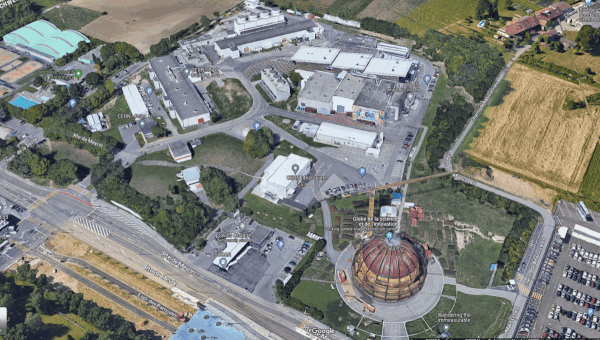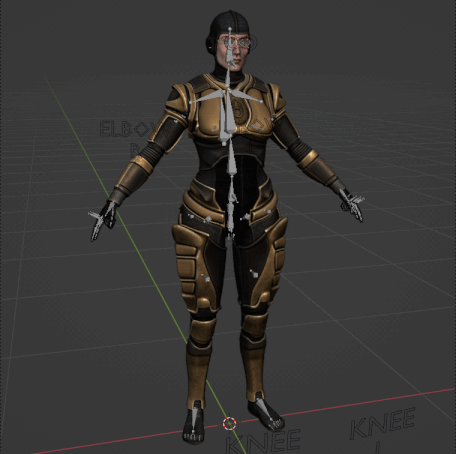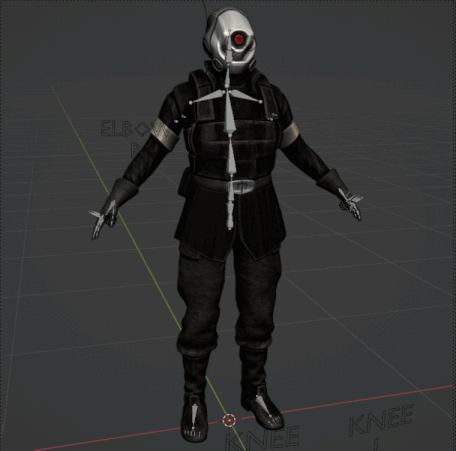top of page


Overview
Overview
Theta Division is a Half-Life inspired FPS Project intended to showcase my capabilities within the fields of Game Design, Technical Design, Storytelling and Level Design.
It was developed over the course of 6 weeks (half-time) at TGA in Malmö.
Project goals
Template:
-
Establishing a First Person Template with satisfying feedback for general interactivity and combat
-
Devising ranged combat AI with a well-balanced influence on combat
-
Creating a variety of gameplay assets to drive environmental puzzle-solving and storytelling.
Details
Time Spent
-
Template - 4 weeks
-
Level - 2 weeks
Engine
-
Unreal Engine 5
Software Used
-
Blender
-
Photopea & Photoshop
-
Substance Painter
-
FL Studio
-
PureRef
Level Design:
-
Conveying the groundworks for an intriguing Half-Life inspired story with a lot of mystery and action
-
Designing spaces allowing for interesting combat
-
Showcasing the Template's various features
Pre-Production
Pre-Production
Creating the Template
In my pre-production phase, I sought to capture the essence of Half-Life early on through gathering reference material. I'm very interested in CERN, and immediately recognized the research facility surrounding the Large Hadron Collider in Geneva as a good visual reference.


I figured an interesting approach to Level Design would be to copy the actual layout of the LHC facility, and design gameplay around the pre-existing architecture, so I created a simple blockout of the area in Blender to give me a good sense of scale and datum.
Cascade
Half-Life's story is defined largely by an overwhelming cascade scenario which changes the fate of the world. Seeing this as an important element of the worldbuilding, I sought to create an interesting visual effect which would give the level an overwhelming sense of presence, and help define the stakes.
This visual effect, meant to resemble an enormous particle collision drawing power from the atmosphere, was formatted through a combination of Material nodes and Unreal's Cascade engine. The video above shows the progression of the effect's development.
Layout Sketch

Envisioning the level as taking place on the facility grounds leading in to the facility, I began sketching potential gameplay beats and points of interest.
The idea was to give the player some agency but force them into areas where they would have to engage in combat to proceed.
Creating the Template

Feeling content with the Game's core design, I began work on the Project's template. I wanted a template which could provide satisfying ranged combat and environmental interaction.
Character Designs
Treating the project as any regular game project, I started tackling what I believe is the most important aspect of worldbuilding; the Player's placement in the game world and their fictional identity.
Using a Base Character and Rig of my own creation, I fomented the designs for the Protagonist and principal Enemy in Blender and Substance Painter. Using a plugin called "Mr. Mannequin Tools", I later imported these characters into Unreal seamlessly.

Daphne Siska

Inspiration: Gordon Freeman
Daphne Siska is the protagonist of the game.
She is a theoretical physicist and black-ops soldier who functions as part of the titular "Theta Division"; a paramilitary wing of the organization "CORE", who provide military response to often unpredictable scientific experiments which may result in undesired visitors from alternate dimensions.
Soldier
The Soldier is a military unit which has been dispatched as part of an operation to destroy "CORE". The Player sees themselves combating this enemy throughout the majority of the game.

Inspiration: "Metrocop" from Half-Life 2
Viewmodel animations
The viewmodel acts as the Player's fictional body, and a means by which the protagonist's character traits are conveyed visually during gameplay. Emphasis on fidelity here is crucial as it reinforces the Player's fictional identity, and helps provide satisfying feedback during gameplay.
As most of the template's focus would revolve around combat mechanics, I considered the viewmodel animations to be an important initial focus in the Template's development, and began keyframing the animation sets for the three principal weapons in the game.
SMG
MP5 model provided by Michael Karel under the (CC BY 4.0) license
https://sketchfab.com/3d-models/mp5-submachinegun-2a9ce66fe96643fc8f20927401e5054c
PISTOL
Pistol model provided by DJMaesen under the (CC BY 4.0) license
https://sketchfab.com/3d-models/pistol-5f6ec54257de449cacc8c872660b40d3
WRENCH
Wrench model provided by Lukas MGC under the (CC BY 4.0) license
https://sketchfab.com/3d-models/pipe-wrench-1f661fcf48684de29fd1ad96682c95c2
Player Controller
Health System
The Player has Health and Armor Points, can take damage and die in various ways. Health and Armor can be replenished via item pickups in the environment.
Upon death, the character ragdollizes and remains in first person, heightening viscerality.
Item Pickup System
The Player can pick up and drop any physically simulated object within a certain mass and volume, and drop or throw them.
This can be used to reach advantageous places or clear rubble out of a blocked area.
Weapon Handling System
Two firearms are available for pickup in the game; a Pistol and an SMG.
As they are the same caliber, they deal an equal amount of damage, though the SMG fires more rapidly and has a higher magazine capacity.
Environmental Assets
I wanted a wide variety of assets which I could utilize in my level design emergently, and that could be used to create environmental puzzles and provide challenge.
Tripmines
Tripmines produce an obvious laser beam and fire a shotgun volley if the Player activates it.
Tripmines can be circumnavigated by avoiding the laser beam, or shot to cause them to fire prematurely and become deactivated.
Explosives
Explosive canisters can be shot to produce an explosion of varying scale, depending on the size of the container. If multiple canisters are in close promixity, they can incite a chain reaction.
Forcefields
Forcefields block passage of both the Player and bullets. They are connected to a nearby battery terminal, and can be deactivated by removing the battery unit from it.
Turrets
Turrets are activated via proximity and sight, and can quickly kill the Player with its machine guns. Their sight check can be blocked with items the Player can pick up and throw. The only means of disabling it is to shoot the power unit on its back.
Electrified Puddles
Electrified pools of water cause continuous damage to Players within proximity. If the puddle is electrified due to a nearby Battery Unit, it may be disabled by removing the connected battery.
Spinning Fan Blades
Spinning fan blades threaten the Player's path inside ventilation shafts, and cause instant death upon contact. The only means of avoidance is circumnavigation.
Fästpunkt 1
Artificial Intelligence
For this project I wanted a simple but effective enemy AI, capable of ranged combat and behaving somewhat intelligently. I sought to keep my scope fairly light within this field due to time constraints, but have enough to provide a satisfying and engaging combat response.
Enemies needed to be capable of Idle Behavior, Combat Behavior and Searching Behavior, as well as being able to react to sounds produced by the Player and produce the appropriate response.

Animation Set
I began by keyframing the animation set for the enemy character in accordance with my vision and produced a locomotion set that would convey the character's soldiery and intimidation factor.
The firing animations are formatted between three animations, where the enemy fires either one, two or three shots. These are layered to the upper body and therefore can be blended with the locomotion animations satisfyingly.
Behavior Tree

The Behavior Tree driving the Soldier's AI. The variable "NPCState" is defined via the AIController based on stimulus received, and drives the current state being handled by the Behavior Tree.
Idle Behavior
Patrol Points
Enemies patrol along a set of predefined points, stopping for a variable time at each one.
Random Patrol
Enemies patrol to a random point in the navmesh and stop there at a variable time before patrolling to another point.
Combat Behavior
(Transparent glass blocks sightlines for debug purposes)
Basic Reactivity
Enemies become aware of the Player via line of sight and sound events.
If the Player is in sight, the enemy will engage them in direct combat.
If the enemy perceives a suspicious sound event, they will begin searching the area for the Player.
Search State
Enemies can enter a search state if they either hear a suspicious sound event, such as a gunshot, or if they've lost sight of the Player for a sustained period. They will then search the area around the last stimulus for a period. If nothing was found, they will return to their idle behavior.
Sound Perception System

This function determines whether an NPC is able to hear a gunshot or not.
It draws a LineTrace from the NPC to the Player, and checks for environmental collisions that may stand inbetween. A backwards LineTrace is drawn on environmental collisions to determine the thickness of the surface hit, which factors into sound absorption.
If the sound has no potential to be heard, the NPC will not react to it.
In a more sophisticated system, the surfaceType that was hit would factor into the amount of sound absorbed.
Gunshots can be easily heard through thin surfaces.
A thick surface absorbs enough sound for it not to be heard.
A SoundBlocker Actor blocks all potential sound stimuli.
Note that this system is primitive and would require deeper sophistication for an actual game.
Creating the Level
Creating the Level
Scrapped Geneva Level
Feeling that the template was in a ready state, I began designing the principal level wherein I could showcase the template's features, as well as lay the groundworks for an interesting story and game world.

I envisioned the first Act as taking place on the streets of Geneva, through which the Player would traverse toward the site of the experiment. Geneva has many tight streets and interesting architecture, which I thought could result in some interesting level design.
Along the way, the Player would be introduced to the Enemy faction and onboarded as to the combat mechanics.
This task proved more troublesome than it was worth, however, as it increased the scope of the project dramatically.
The screenshot here is of an early attempt to foment the basic scale and example layout of the level.

Feeling intensive time constraints, I was forced to rework my approach to the level design, and this level was ultimately scrapped completely.
Reworking The Approach

While the Cascade scenario proved an interesting visual effect, I found the current design causing problems with pacing, as I wanted the reveal of the cascade to come after the Player had received the proper onboarding of combat and mechanics.
Building the Underground
Overview
In this level, the Player is guided through a series of storytelling and gameplay beats that help establish the enemy faction, combat and interactivity.
Storage Rooms

The facility is undergoing a military assault, and a recently bored tunnel has collapsed behind the Player and rendered them unconscious. The Player wakes up, dazed and confused, inside a derelict storage room, and quickly gets their bearings.
An intro sequence plays upon the game's start in which the Player wakes up and arms themselves with their trusty pipe wrench.
A text crawl builds mystery and intrigue.
As the Player progresses through the ventilation shaft, they bear witness to a gruesome scene, which helps establish the enemy faction and impending danger.
The same sequences as they look in Blender.
Hallway

A great cascade is setting the facility into a state of disrepair. Environmental hazards are all abound, and enemy soldiers patrol the perimeter.
As the Player exits the storage rooms, they are presented with an easy opportunity to dispatch an enemy, allowing them to get a feel for the combat with little risk.
A chasm forces the Player into a nearby maintenance area, where the floors have become electrified and must be circumnavigated. Here, the Player gets a feel for environmental hazards and destructible objects.
A makeshift blockade set up by desperate facility personnell blocks the Player's path. Here the Player learns how to pick up and drop items.
Machine Room

Enemy forces are all abound.
A Turret threatens your advance.
The Player locates their first firearm; a Pistol. They use it quickly thereafter to dispatch of two enemies along a walkway. Several tripmines threaten the Player's path down the stairwell.
A turret has been erected by the enemy to eliminate any fleeing personnel. The Player reveals a nearby path hidden by a makeshift blockade and circumnavigates the Turret.
The Player climbs up to the walkway and is accosted by an enemy soldier.
With a vantage over the Turret's back, the Player is able to swiftly disable it.
The only way to proceed is through a gate operated via wheel crank. The nearby floor is electrified and must be disabled through the nearby battery terminal. On their way to the terminal, the Player gains a view of the Exit elevator, though a forcefield blocks the way.
Collapsing Hallway
Bypassing the crank wheel gate, the Player proceeds down a hallway, which spontaneously collapses.
The Player is forced to platform on a series of pipes to get across.
Facing a dead end, the Player platforms on another series of pipes, gaining access to a ventilation shaft.
Ventilation shaft
Inside the ventilation shaft, a series of spinning blades cause instant death, should the Player fall down.
Maintenance Area & Exit
Two soldiers idle on the floor below, and a heavily electrified area threatens the Player if they should fall.
Luckily, an explosive barrel nearby easily dispatches of the enemies.
The Player disables the forcefield leading to the Exit.
On the way back, a soldier accosts the Player.
At the foot of the Exit elevator, the Player gains a new weapon; the SMG. They are immediately forced to use it as an enemy emerges from the Exit elevator.
Museum & Finale
The Player emerges inside the Globe of Science and Innovation; a small museum. There, they are forced to combat several enemies in order to proceed.
Exiting the museum, a dystopian vista reveals itself. The facility is facing a major upheaval, as the enemy forces have repurposed the particle collider to invoke the apocalypse.
End of Act I.

The nearby museum, intended to be the Player's start, was simply too minute to provide the onboarding and satisfying pacing desired.
I decided instead to designate this Level as the climax of the experience, and began working on a new level, intended to precede this one, where I could provide the design beats needed.
Tony Palm
2023
Full Playthrough
bottom of page